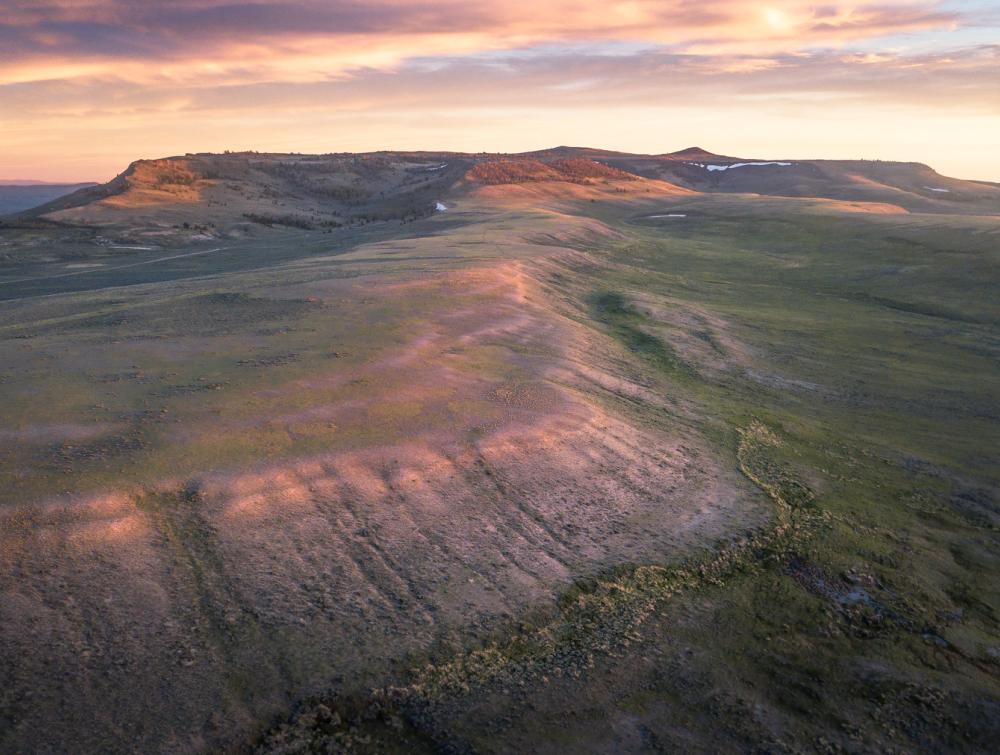Agency Plan Supports Wyoming Wildlife and Outdoor Recreation

Northern Red Desert, WY
Mason Cummings, TWS
Bureau of Land Management draft plan for Rock Springs supports migration routes and outdoor recreation heritage in southwestern Wyoming.
The Wilderness Society • Audubon Rockies • Sierra Club, Wyoming Chapter • Wyoming Wilderness Association • Wyoming Outdoor Council
A long-awaited draft plan for stewarding 3.6 million acres of public land in southwestern Wyoming was issued by the Rock Springs office of the Bureau of Land Management (BLM) today, updating 25-year-old management practices to better protect world-renowned migration corridors for pronghorn and mule deer and safeguard wild landscapes valued by local communities. This plan presents a forward-thinking approach that ensures the ability of Wyoming residents to continue enjoying healthy lands and passing them down to future generations.
Areas addressed in the Rock Springs plan include favorite recreational hotspots and culturally important sites in the Northern Red Desert (like the Oregon Buttes, Boar’s Tusk, and Sand Dunes), as well as important wildlife habitats and hunting opportunities in the Big Sandy Foothills. The BLM proposes expanding the existing oil and gas closures in the Northern Red Desert and Big Sandy Foothills, areas of low oil and gas potential, a decision strongly supported by local communities and for which Tribal Nations have historically advocated. The plan recognizes the importance of traditional Indigenous homelands and migratory territories in this planning area for the culture and lifeways of the Eastern Shoshone, Northern Arapaho, Crow, Ute, Southern Ute, Shoshone-Bannock, Cheyenne, Blackfoot and many other Tribes. Importantly, the agency proposes protections for Tribally-defined "respected places" and acknowledges and upholds Tribal Sovereignty. Government-to-government consultation has taken place and will continue throughout the planning and implementation process.
This plan prioritizes crucial wildlife habitats for big game and lands important for Greater sage-grouse, as well as other sagebrush dependent species. The agency proposes to halt oil and gas leasing in the portion of the Red Desert to Hoback mule deer migration corridor in this planning area and designates the corridor as an Area of Environmental Concern (ACEC). Potential for oil and gas development in this area is considered low.
The draft plan significantly increases the amount of land protected as ACECs—from 286,470 acres today to over 1.6 million acres. ACECs are the principle designation BLM can use to protect important natural, cultural, and scenic resources, intact landscapes, habitat connectivity, and ecosystem resilience. ACECs for Steamboat Mountain, South Pass Historical Landscape, and the Big Sandy Foothills along the Southern Wind River Mountain Range will ensure that currently undeveloped areas will stay that way for future generations. Use of ACECs, special recreation management areas, and managing lands for wilderness character allows the agency to achieve a plan that balances the agency’s mandated multiple uses.
Wyoming residents and public lands advocates responded to the draft plan:
“The Red Desert was included in the 44-million-acre Treaty of 1863 with the Eastern Shoshone Tribe, and special places in the Northern Red Desert have been important to many Tribes for millennia. People need to know and understand our ties to our traditional territory and connection to these lands,” said Jason Baldes, the Vice President of the Inter-Tribal Buffalo Council and an Eastern Shoshone Tribal member. “Personally, I know my grandmas and grandpas of long ago were praying and thinking of us, and it is our obligation to do the same for future generations, to attempt to be good people and work to leave this place better than it came to us. This plan keeps our traditional homelands safe from the exploitation we see taking place in other areas, and my hope is these lands can remain the same as they have for thousands of years.”
“This is a positive draft plan with the right intentions at a critical time for wildlife and the future of outdoor experiences in southwest Wyoming,” said Mark Kot, a retired public lands planner for Sweetwater County. “Now is the time for us to speak up to share with the BLM our ideas for achieving a balanced plan, that includes selectively protecting important areas in the Northern Red Desert and around Adobe Town, as well as other unfenced open spaces and treasured places in the region.”
“Premier wildlife habitats in the Northern Red Desert and Big Sandy Foothills promote population sustainability for big game herds, Greater Sage-grouse and other sagebrush dependent species. Mule deer and pronghorn that winter in these areas migrate as far north as the end of the Wyoming Range and into Grand Teton National Park—they depend on connected and undeveloped lands along the way,” said Tom Christiansen, retired Wyoming Game and Fish Department Sage Grouse Coordinator. “I applaud the foresight these land managers have shown in this draft plan for protecting migration corridors and limiting energy development in important landscapes for a variety of wildlife. This draft plan provides critical tools for managers to continue stewarding these lands.”
Contact: Julia Stuble, Wyoming Senior Manager, The Wilderness Society: 307-399-2924; julia_stuble@tws.org
